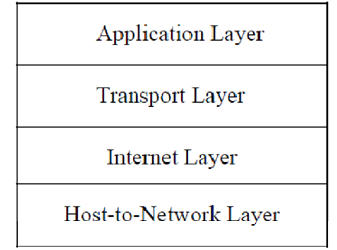Wide Area Network:
A wide area network, or WAN, spans a large geographical area, often a country or continent. It contains a collection of machines intended for running user programs. These machines are known as hosts. The host is connected by a communication subnet or just subnet for a while. The hosts are owned by customers for eg. People''s personal computers whereas the communication subnet is typically owned and operated by a telephone company or Internet service provider. The job of the subnet has to carry messages from host to host, just same as the telephone system takes words from speaker to listener. Departure of pure communication aspects of the network from the application aspects, the hosts, greatly simplifies the complete network design.
In wide area networks, the subnet consists of two distinct components: transmission lines and switching elements. Transmission lines move about bits between machines. They can be completed of copper wire, optical fibre, even radio links. In most WANs, the network contains numerous transmission lines, each one linking a pair of routers. If two routers that do not share a transmission line wish to communicate, they should do this indirectly, via other routers. When packet is sent from one router to another via one or more intermediate routers, packet is received at each intermediate router in its entirety, stored there until the required output line is free, then forwarded. A subnet organized according to this principle is known as store-and-forward or packet-switched subnet. Nearly all wide area networks except those using satellites have store-and-forward subnets. When the packets are little and all the same size, they are regularly known as cells.
The principle of a packet-switched WAN is important. Generally, when a procedure on some host has a message to be sent to process on some other host, the sending host first cuts the message into packets, each one bearing its number in a sequence. These packets are then injected into network one at a time in quick succession. The packets are transported individually over a network and deposited at the receiving host, where they are reassembled into an original message and delivered to the receiving process. A stream of packets resulting from some initial message will be illustrated. All the packets follow the route ACE, rather than ABDE or ACDE. In a number of networks all packets from a given message have to follow the same route; in others each packed is routed separately. Of course, if ACE is one of the best routes, all packets may be sent along it, even if every packet is individually routed.

Not all WANs packet switched. A second possibility for the WAN is a satellite system. Each router has antenna through which it can send and receive. All routers could hear the output from satellite, and in many cases they can also hear the upward transmissions of their fellow routers to the satellite. Sometimes the routers are connected to substantial point-to-point subnet, with only some of them having satellite antenna. Satellite networks are essentially broadcast and most functional when broadcast property is important.
ARPANET:
The subnet would consist of minicomputers known as IMPs (Interface Message Processors) connected by 56-kbps transmission lines. For high reliability, IMP would be connected to two other IMPs. The subnet was to be a datagram subnet, if some lines and IMPs were destroyed, messages can be automatically rerouted along alternative paths.
All node of the network was to consist of an IMP and host, in the same room, connected by a small wire. A host could send messages of up to 8063 bits to its IMP, which would then break these up into packets of 1008 bits and forward them independently toward the destination. Each packet was received in its whole before being forwarded; the subnet was first electronic store-and-forward packet-switching system. Each node of the network was to consist of an IMP and host, in the same room, connected by a short wire. A host can send messages of up to 8063 bits to its IMP, which would then break these up into packets of 1008 bits and forward them independently toward the destination. Each packet was received in its total before being forwarded; the subnet was the first electronic store-and-forward packet-switching network.
ARPA put out a tender for building the subnet. Twelve companies bid for it. After evaluating all the proposals, ARPA BBN, a consulting firm in Cambridge, Massachusetts, and in December 1968, awarded it contract to build a subnet and write subnet software. BBN chose to use specially modified Honeywell DDP-316 minicomputers with 12K 16-bit words of core memory as the IMPs. The IMPs did not have disks, because moving parts were considered unreliable. The IMPs were interconnected by 56-kbps lines leased from telephone companies. Although 56 kbps is now choice of teenagers who cannot afford ADSL or cable, it was the best money can buy.
The software was divided into two parts: subnet and host. The subnet software consisted of the IMP end of the host-IMP connection, the IMP-IMP protocol, and a source IMP to destination IMP protocol designed to improve reliability. Outside the subnet, software was also necessary, namely, the host end of the host-IMP connection, the host-host protocol, and the application software. It soon became clear that BBN felt that when it had accepted the message on host-IMP wire and placed it on host-IMP wire at the destination, job was finished.